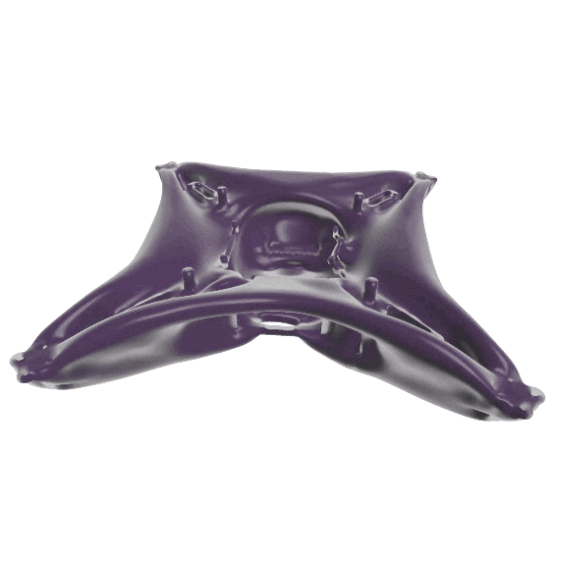Generative Design / Topology Optimization
What is Generative Design?
Generative design is a process. Designers and engineers specify design goals into the generative design software, with parameters such as performance or spatial requirements, materials, manufacturing methods, and cost constraints. The software explores all the possible permutations of a solution, quickly generating design alternatives. It tests and learns from each iteration what works and what doesn’t.

Industry expert Joe Walsh from IntrinSIM led the ASSESS Initiative to define Generative Design:
“Generative design is the use of algorithmic methods to generate feasible designs or outcomes from a set of performance objectives, performance constraints, and design space for specified use cases. Performance objectives and constraints may include factors from multiple areas including operational performance, weight/mass, manufacturing, assembly or construction, usability, aesthetics, ergonomics, and cost.”
You can see Joe's webinar here:
Generative Design is not a particular algorithm or an optimization technology, but instead may leverage one or more optimization technologies and algorithms along with artificial intelligence to create/drive viable designs or outcomes for a specific design scenario.
The Benefits of Generative Design
- Enables exploration of a broader range of concepts
- Enables generation of effective designs for different/multiple manufacturing process
- Enables significantly increased design innovation
- Enables performance driven design early in the design process
- Dramatically reduces design/analysis cycles
Generative Design Software
Software enables rapid computations for design concepts generated by algorithms. It enables exploration of a broader range and dramatically different design concepts. Generative Design software enables generation of effective designs for different/multiple manufacturing process and performance driven design early in the design process, dramatically reducing design/analysis cycles. With Generative Design software, companies can explore a wider range of design options - In the time you can create one idea, a computer can generate thousands, along with the data to prove which designs perform best.
Such software makes impossible designs possible. Generative design lets you create optimized complex shapes and internal lattices. Some of these forms are impossible to make with traditional manufacturing methods. Instead, they're built using new additive manufacturing methods.
And you can optimize for materials and manufacturing methods. After you set goals and parameters, and the software will create high-performing design options based on those constraints. The software resolves conflicting design constraints so you can focus on innovating. From aerospace to architecture and construction Generative design is out of the lab and being used in the field.
Software driven design concepts generated by algorithms can
- Reduce time
- Reduce cost
- Reduce weight
- Increase quality
- Improve innovation
- Improve competitiveness
How to Choose Generative Design Software
As a user or company considers the best software tool to use for generative design, he/she should consider:
- Handling all appropriate objectives and constraints
- Handling multiple operational (load) conditions
- Handling Multi-Physics Handling multiple manufacturing processes
- Handling cost as an objective or constraint
- Handling Generative Design in an assembly/system context
- Enabling informed, comprehensive and efficient exploration of viable design alternatives
- Enabling efficient & effective transformation to detailed design analysis
- Enabling efficient selection guidance of generated design concepts
- Enabling Generative Design within the designer’s process, context & terminology
- Enabling broad accessibility to Generative Design
Resources to Help Choose and Implement Generative Design
See an excellent paper that explores the potential paradigm shift enabled by Generative Design and what is required to enable that design paradigm shift here:
"A Vision for Generative Design” is a software independent intrinSIM Market Research Paper
A great example of Generative Design Software demonstrated on a recent webinar:
